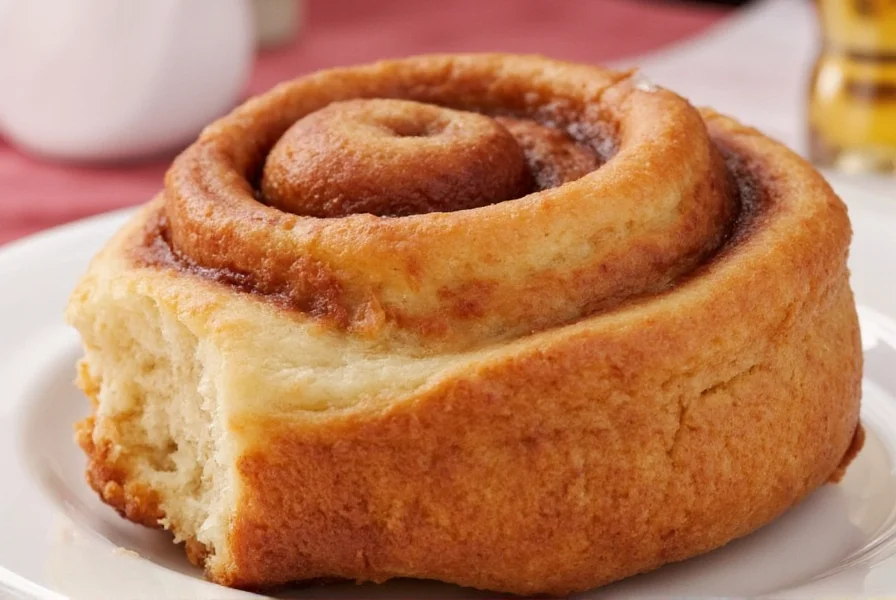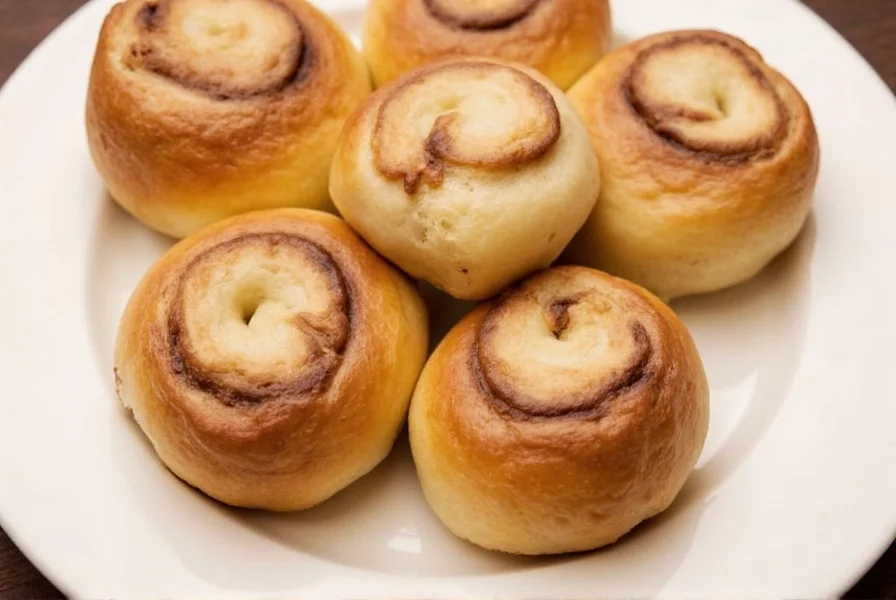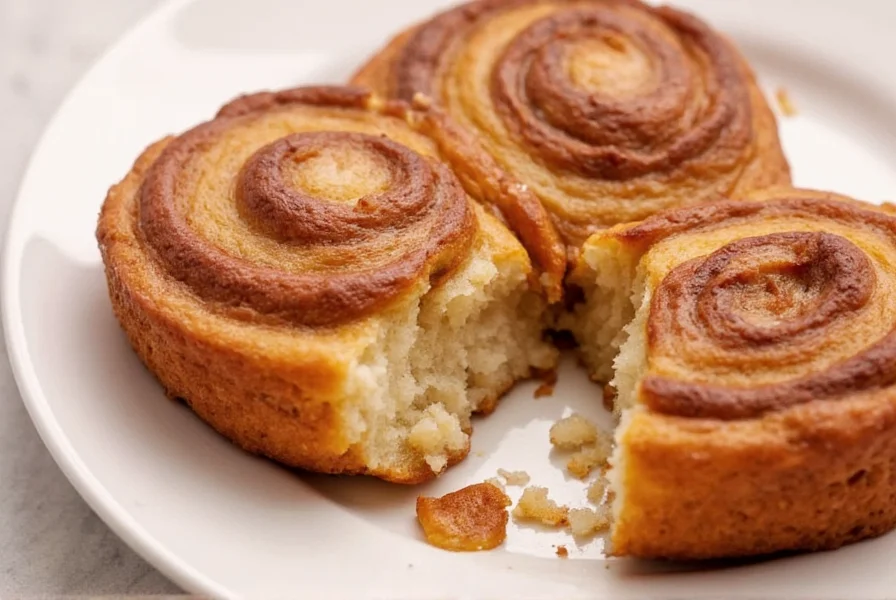When searching for pictures of cinnamon buns, you're likely looking for visual references that capture the perfect balance of texture, color, and presentation. Understanding what to look for in these images can help whether you're baking, photographing, or simply appreciating this beloved pastry.
Key Visual Characteristics of Quality Cinnamon Buns
The most appealing cinnamon bun photographs highlight specific features that distinguish exceptional pastries. Professional food photographers and experienced bakers know that certain visual elements immediately signal quality:
- Spiral definition - Clear, distinct layers visible in the cross-section
- Color gradient - Rich caramel tones ranging from golden to deep brown
- Glaze consistency - Shiny but not pooling, with slight transparency to show the bun beneath
- Surface texture - Visible pull-apart quality without appearing dry or cracked
- Steam effect - In fresh-from-oven shots, subtle wisps indicating warmth

Common Cinnamon Bun Styles in Photography
Different culinary traditions produce distinctive cinnamon bun variations, each with recognizable visual traits. Recognizing these styles helps when searching for specific types of pictures of cinnamon buns:
| Style | Visual Characteristics | Best Photography Angles |
|---|---|---|
| Classic American | Generous cinnamon-sugar filling, thick icing drizzle, golden-brown exterior | 45-degree angle showing cross-section and top glaze |
| Scandinavian Kanelbulle | Darker, cardamom-infused dough, pearl sugar topping, flatter shape | Overhead shot emphasizing pearl sugar texture |
| Gourmet Artisan | Visible spice flecks, creative glazes (maple-bacon, citrus), imperfect handmade appearance | Close-up highlighting texture details |
What Poor Quality Cinnamon Bun Images Reveal
Not all pictures of cinnamon buns accurately represent quality pastries. Certain visual cues indicate potential issues with the actual product:
- Shiny, plastic-like glaze - Suggests artificial ingredients or improper setting
- Indistinct swirls - Indicates under-proofed dough or insufficient filling
- Dark spots or uneven browning - Sign of inconsistent oven temperature
- Greasy appearance - Excess butter in the filling or improper baking
- Cracks in the surface - Over-proofed dough or incorrect flour ratio

Using Cinnamon Bun Images as Baking References
When searching for pictures of cinnamon buns to guide your baking, focus on images that provide practical information rather than purely stylized food photography. Look for:
- Multiple angles showing cross-sections and top views
- Natural lighting that reveals true color and texture
- Scale references (like a fork or hand) to understand actual size
- Step-by-step images showing dough preparation and filling application
- Close-ups of the swirl pattern before and after baking
Professional bakers often use these visual references to troubleshoot their own creations. For example, if your cinnamon rolls aren't developing that signature pull-apart texture, comparing your results to high-quality cinnamon bun images can help identify whether the issue lies in proofing time, dough hydration, or filling consistency.
Photographing Cinnamon Buns for Maximum Appeal
Whether you're a home baker sharing your creations or a food blogger, understanding how to capture compelling pictures of cinnamon buns makes a significant difference. Key photography techniques include:
- Using natural side lighting to create dimension and highlight texture
- Shooting within 15 minutes of baking for optimal steam effects
- Adding subtle props (like a dusting of cinnamon or a drizzle in progress)
- Avoiding excessive filters that distort the natural golden-brown color
- Capturing the moment of pulling apart a bun to show the stretchy interior
These techniques help create authentic representations rather than artificially enhanced images that misrepresent what homemade cinnamon buns actually look like.
Frequently Asked Questions
What makes a cinnamon bun photo look professional?
Professional cinnamon bun photographs use natural side lighting to highlight texture, show clear spiral patterns in cross-sections, and capture the glossy sheen of properly set glaze without appearing artificial. The best images include subtle details like steam rising from freshly baked buns or visible pull-apart quality that demonstrates proper proofing.
How can I tell if cinnamon bun pictures show authentic homemade quality?
Authentic homemade cinnamon bun images typically show slight imperfections in shape, natural color variations in the browning, and a matte rather than plastic-like glaze finish. Look for visible air pockets in the dough and irregular swirl patterns that indicate hand-rolling rather than machine production. Professional food stylists often add subtle flour dusting or uneven glaze distribution to maintain this authentic appearance.
What's the ideal color for properly baked cinnamon buns in photographs?
The ideal color range for cinnamon buns in photographs spans from light golden brown to deep caramel, with darker edges indicating proper caramelization. High-quality images show a gradient from the lighter top center to darker outer edges and spiral lines. Avoid images with completely uniform color or excessively dark spots, which suggest inconsistent baking. The best pictures capture the warm reddish-brown tones of the cinnamon filling bleeding slightly into the dough.
Why do some cinnamon bun pictures look greasy?
Cinnamon bun images appear greasy when the pastry contains too much butter in the filling or when the bun has been improperly stored after baking. In photography, excessive shine without the characteristic matte finish of sugar glaze typically indicates either an overabundance of melted butter in the actual product or artificial enhancement in post-processing. Authentic homemade cinnamon buns should show a balanced sheen from the glaze without oily patches.











 浙公网安备
33010002000092号
浙公网安备
33010002000092号 浙B2-20120091-4
浙B2-20120091-4